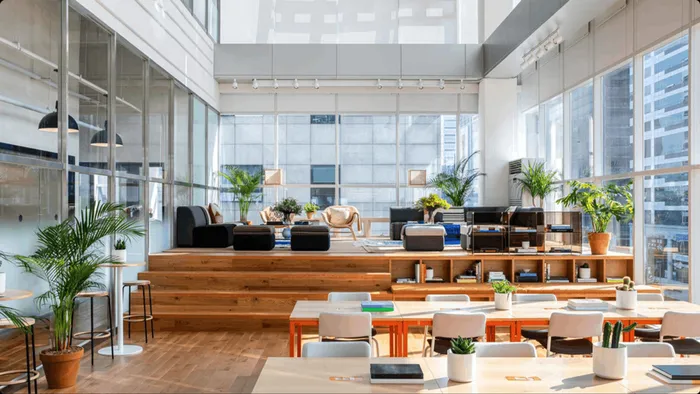
The Covid-19 pandemic has caused a seismic shift in the way the world works, as well as changing the way we all think about the office.
While many have enjoyed some of the benefits of working from home, it has become clear that the office remains crucial as a place in which to reconnect and work together; something we are also hearing from our members across the WeWork community in Johannesburg and Cape Town. The office must now serve a renewed purpose as a place to be collaborative, creative and productive, while accommodating different working styles and tasks that can’t be done at home.
An essential part of every business’s workplace plans – alongside them being optimised for the activities and social interaction that can’t happen remotely – is employee wellbeing. Also absolutely crucial is that when employees go into the office, they know they are entering a space which prioritises their safety. At WeWork, the nature of our business model enabled us to adapt our space with speed and efficiency over the past year. With insights from our members around the globe, we took a holistic approach to implementing precautions and protocols to instil confidence in both our employees and members.
Paramount was having our health and safety measures, response plans and space modifications independently audited and verified by Bureau Veritas, a world-renowned audit agency.
Here are my five top tips to create safe workplaces that foster collaboration, productivity and motivation.
Step up social distancing
Social distancing is now second nature. While de-densifying headquarters by removing desks and organising working schedules are steps in the right direction, you must also consider how your employees use the space – how people access the printers, use the lifts and stairs, or catch up with colleagues over a coffee. Consider creating a socially-distanced layout that minimises footfall in high-traffic spots, and a one-way system through busy corridors. Reassess how many people can fit safely and comfortably in meeting rooms, and use this number to determine the new maximum occupancy. If altering your layout proves challenging, why not look into setting up “satellite” offices across South Africa to help de-densify your HQ and offer your employees greater autonomy?
Believe in behavioural signage
Making changes is all well and good, but humans are creatures of habit and will often forget new rules if not reminded. Clear signage is an effective way to reinforce change. Such signs should be easy to spot and easy to read, with a combination of imagery and words that are clearly understood at a glance. We often assume people know as much as ourselves, but it is crucial to spell out exactly what is required.
For example, specify face-covering rules; identify spots where people should walk, sit or queue; and, use arrows on the floors or walls as a way to direct new one-way systems. We use cushions to communicate new rules in seating areas without compromising on comfort or our design ethos.
Critical cleaning
Businesses are aware that enhanced cleaning and sanitising are essential in combatting the spread of Covid-19. Why not offer complimentary sanitising products to your employees and make them available at high-touch points around the office?
At WeWork, we have distributed over 45 000 hand-sanitising dispensers, 33 000 wipe dispensers and 900 000 boxes of gloves to our members and employees worldwide.
Strengthen your systems
Your heating, ventilation and air conditioning (HVAC) systems distribute air around an interior space and are a major part of pandemic safety measures. These systems play a huge role in the cleanliness, circulation and amount of air indoors, and an even bigger role in minimising the spread and survival of airborne viruses, both in the air and on surfaces. Make sure you check with your building operators; they will know how to maximise the dilution, filtering and thermal conditioning of your HVAC systems, and can advise on how to bring in more outside air in an effective and efficient way. Also keep an eye out for updates and advice from leading global experts – such as Arup, or local industry experts in South Africa – to further your understanding on recommended best practice.
Employee listening/check-in
Checking in regularly with my team has been instrumental in keeping everyone motivated and productive over the past 12 months. With so many changes, you need to make yourself available to listen to your employees’ concerns, and also be open to receiving feedback and taking new ideas on board; different perspectives can really enhance processes and policies for better and safer results. Your team will likely have different insights into how people work together, so make use of these to enhance your measures.
Read the full article in our latest digimag here.
____________________________________________________________________________________
By Mathieu Proust, General Manager, UK, Ireland and Emerging Markets, WeWork.
